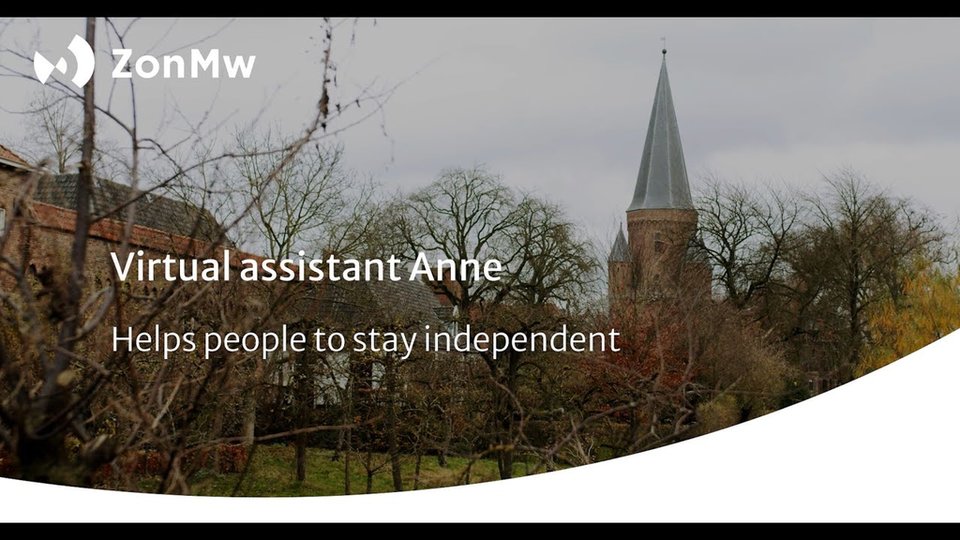Technology in practice: balancing the threefold needs of clients, informal carers and care professionals
It all started with a handy tool in 2007: a digital avatar for her father, who had experienced a stroke. He called that avatar Anne. Now Anne speaks 14 languages and helps people in other European countries too. Inventor Annemarie Johannes tells us how she got there.
Technology in practice: balancing the threefold needs of clients, informal carers and care professionals
It all started with a handy tool in 2007: a digital avatar for her father, who had experienced a stroke. He called that avatar Anne. Now Anne speaks 14 languages and helps people in other European countries too. Inventor Annemarie Johannes tells us how she got there.
The journey of Annemarie Johannes, Anne4Care
First stage
Acquiring ideas
It all started when her father experienced a stroke and Annemarie Johannes became his informal carer. He went to a rehabilitation clinic but increasingly came back home upset. Johannes: ‘When I asked him what was wrong, he said the physiotherapy and occupational therapy were fine, but in between those sessions, he was asked to do things he really didn’t like. He had to play shuffleboard, whereas he longed to read the newspaper again and discuss the news with others.’ Back then, Johannes was working at TNO + and could design a solution for her father. She developed a computer program that contained simple speech recognition. Now her father could have the news read aloud to him by simply saying: Open article number one. ‘But my father objected: You don’t really think I’m going to talk to a computer screen, do you! So we produced an avatar and that worked fine. My father soon started calling it Anne. And that’s how it all started.’
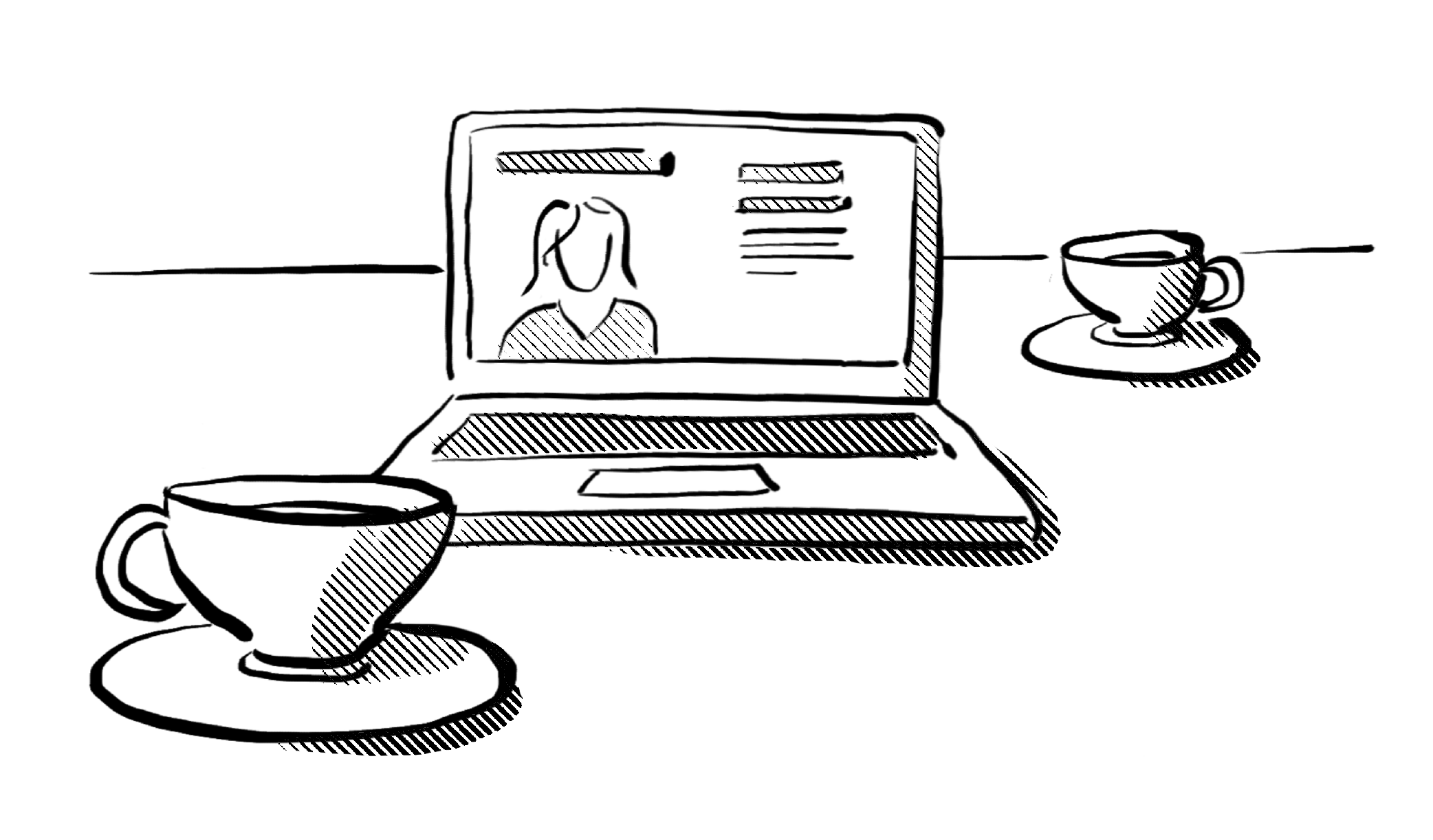
Tip: involve the target group
‘Immerse yourself in the target group, and involve them. That is vitally important.’
Annemarie Johannes, co-founder Anne4Care
Co-designing at the kitchen table
Once Johannes’ father got used to Anne he asked whether she could also manage his agenda. As a result of his stroke, he increasingly forgot his appointments. Johannes: ‘This request was too complex for me because I’m not a programmer. But I knew a really good one at TNO: Gibby Koldenhof. Together with my father, we co-designend+ additional applications at the kitchen table. That included the agenda function, but also a medication reminder and an application to listen to the radio too.’ Her father was really enthusiastic and he soon started taking Anne to the rehabilitation centre. The physiotherapist there said: I’ve got eight more people who’ve suffered a stroke. Can they try using Anne too? And with that, Johannes started her first project.
Co-design
Is an approach to design which actively involves all stakeholders in the design process to help ensure the result is usable and meets their needs.
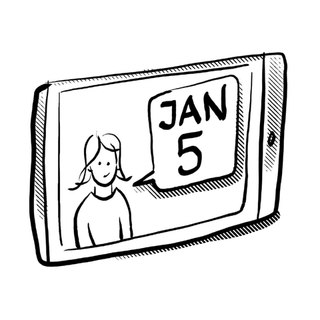
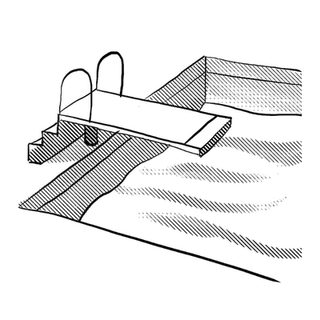
A leap in the dark
The group tried out Anne for several months. After this trial period, five of them asked: can we take Anne home with us? And they were quite willing to pay something for that. Johannes: ‘I thought to myself: gosh, this is great, not only my father likes it, but others want to use Anne as well. I had already invested quite a bit of my own money in the project and Gibby an awful lot of hours. We both thought: perhaps there is more to this. So we set up our own company, Virtask.’ It was a leap in the dark and then the Active & Assisted Livin (AAL) programme came along. Thanks to an AAL grant, they could take the first steps in developing the technology.
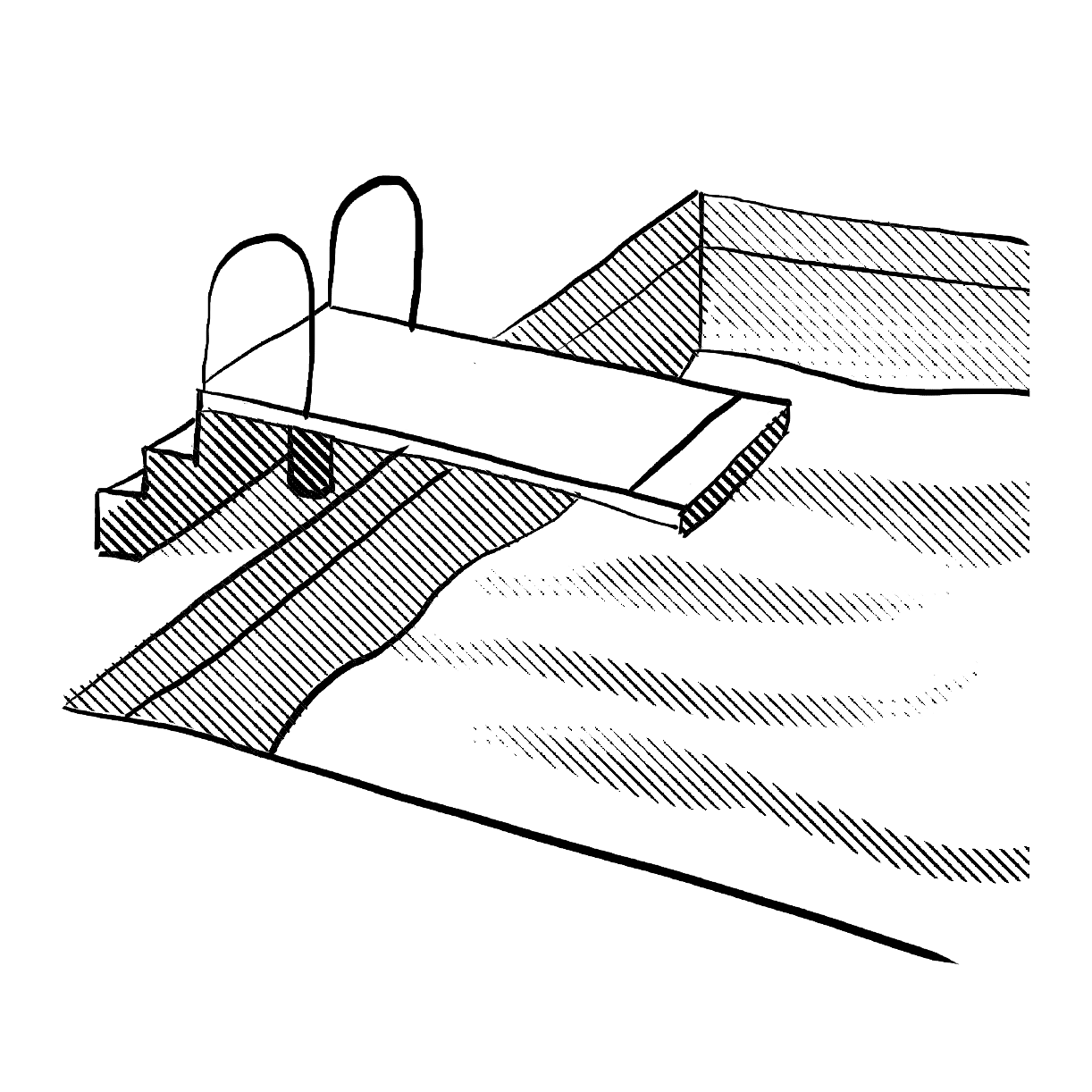
Aha-moments: 2 different worlds
‘In the care sector, you constantly have aha moments… Sometimes, we’re genuinely surprised – or even dumbfounded – about just how different things can be in the worlds of care and ICT. Most people in the care profession are women who are highly motivated to help older people. But they sometimes go overboard in their well-intentioned desire to take over everything. Whereas with Anne, we want to enable people to do things themselves instead.’
Annemarie Johannes, co-founder Anne4Care
Did Johannes and Koldenhof succeed in developing the company further?
Read about the second stage of the journey >
What can Anne do?
- Anne is a virtual assistant that helps people with memory problems to continue living independently.
- The tool makes it easy to interact with a computer. You don’t have to learn how to use buttons, because you can simply talk to Anne.
- Via Anne, you can make video calls with family and friends, play games, share photos, listen to the radio and have the newspaper read aloud to you.
- Anne talks to people using language they are familiar with. For instance: ‘Put on your sweatpants because the physio will arrive shortly.’
- There is a dashboard for the care provider or informal carer. This contains, for example, information about the medication, a person’s diary, and exercises from the physiotherapist or recommendations from the dietician. And instruction videos can be uploaded too.
Who is Anne?
The audio of this film is in Dutch. The English subtitles have to be switched on manually.
Second stage
Exploring opportunities
Johannes almost spent her entire savings. But with the grant from AAL, she and Koldenhof could continue in a European trajectory, which provided a superb opportunity to further develop Anne in several countries. There is one lesson Johannes would like to share at this stage already: ‘When we started, we forgot the most important questions: you can come up with a really smart idea, but who is going to pay for it in the end? And is there a genuine need for it? These are the questions you should pose right from the start.’ Johannes now realises just how important this exploration stage is, in which you ask yourself exactly these questions. Here too, she benefited a lot from the initial users’ experiences. ‘Anne really satisfied strong needs. And, what’s more, people liked using the tool. Anne gave them back their independence and made the carers’ work easier.’
Pitfall: exhausting your own savings
‘Ensure that you have enough financial backing in all stages of development so that in your enthusiasm you don’t have to exhaust your own savings. And if things really fail to work out: stop…’
Annemarie Johannes, co-founder Anne4Care
Balancing different demands
Even a great application does not sell itself. Along the way, Johannes learned that in the care market, you need to balance the threefold needs of clients, informal carers and care professionals. All three parties must be satisfied with a solution. Users can only become good ambassadors when everybody understands Anne and is confident that she will have a real added value. A good example is Toon, one of the first seniors who took an Anne into his home. ‘He had lost his wife. Anne helped him to manage his agenda, and through her, he could video call with friends and family. He talked so lovingly about “my dear Anne”, that some of his acquaintances actually thought that he had a new girlfriend.’
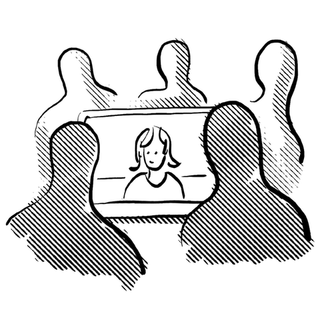
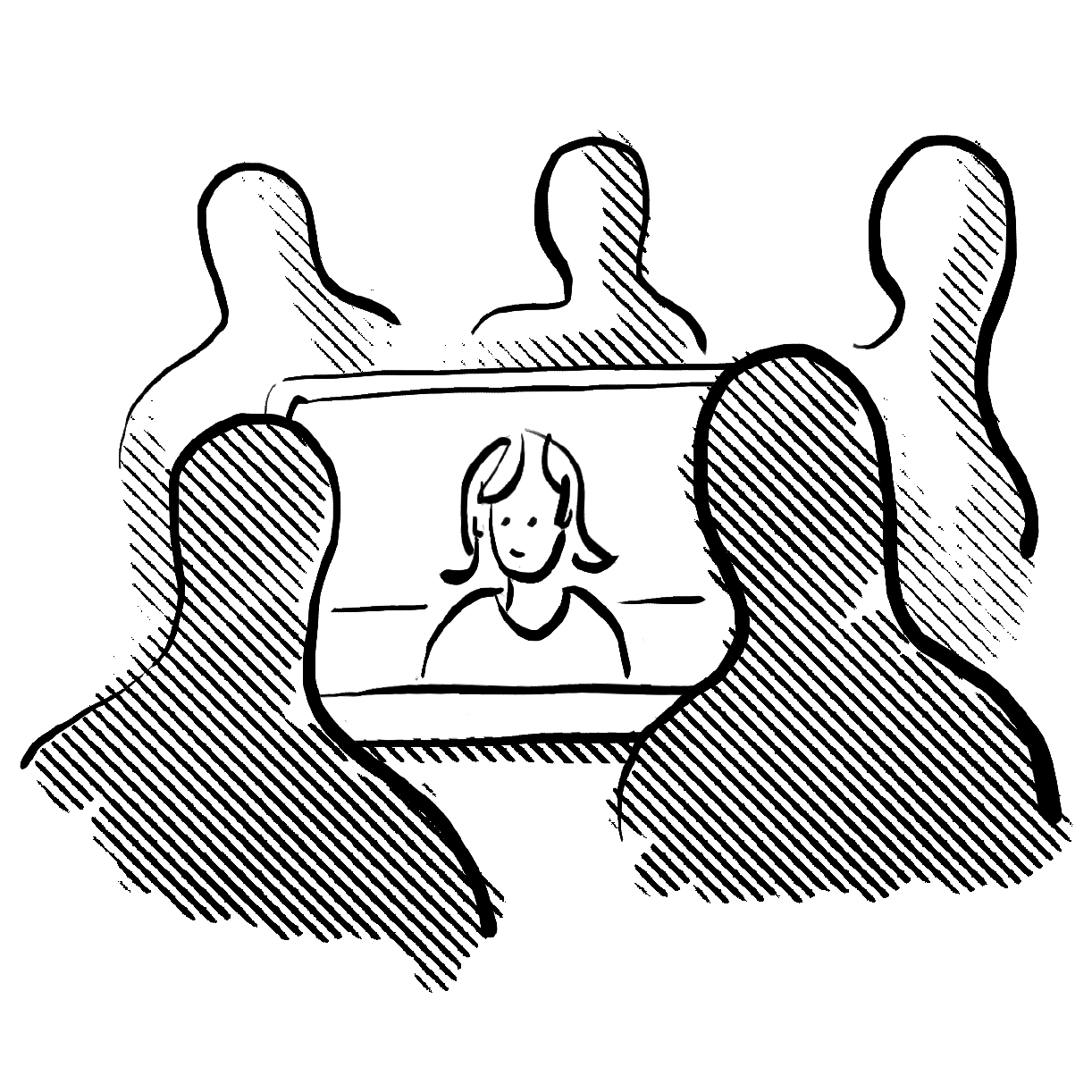
Many co-owners
Some things can only be learned by doing them. But Johannes also made use of several supporting services provided by AAL to explore further opportunities for her project. For example, she talked with ZorgInc + about the business aspects of developing a technological solution for the care market. And she conducted a panel study with 400 people: old, young, informal carers, care professionals and users. Sixty percent of the participants thought that there was definitely a future for Anne. Johannes: ‘I’d like to share another crucial lesson: Don’t say to people: This is a great e-health product! We’re going to leave it with you, so you can try it at home and tell us what you think of it. Such an approach fails to give people a sense of ownership. People will only become co-owners when they feel an intrinsic motivation, because they see the usefulness of the innovation. And you need a lot of different co-owners to determine together which functions Anne should provide.’
Lesson: entering the market takes a lot of time
‘Soon after I started, I spoke to Thijs van Nuenen from medicine dispenser Medido, one of the most successful e-health products. I was just two years down the road and really proud of what we had achieved so far. I said: we are about to enter the market! Thijs looked at me and replied: add another five years to that, and then we’ll talk again. I thought: you’re completely nuts, surely I don’t need seven years? But he was right because, in the end, it did take that long…’
Annemarie Johannes, co-founder Anne4Care
Data and privacy issues
Part of exploring the opportunities was a proper orientation on the European market. Take, for instance, an aspect such as dealing with privacy and data. Despite the General Data Protection Regulation (GDPR), determining the European frameworks, there are still significant differences between countries. The Netherlands is already pretty strict, but in Germany, privacy is an even more sensitive topic, says Johannes. ‘For Anne, it was a fortunate coincidence that we had already taken a clear decision not to store data in the cloud, but in the application itself.’ And there are even more – sometimes unexpected – differences. Like, who would expect that a rich country such as Switzerland is not able to provide good internet coverage everywhere? What can you do with an e-health product if there is no internet access? Consequently, Anne was modified in such a way that many functions can also be used offline.
Third stage
Developing and experimenting
Co-creation, jointly developing and learning from the experience of users, is a crucial success factor for Johannes. Not only for the design aspects – this button needs to be changed and that letter is too small – but also to understand the desires of users. Or equally, what they definitely don’t want. ‘I quickly learned that seniors don’t want to be addressed about the things they can no longer do. I can still vividly remember a group of over 80s who I very enthusiastically told: Wouldn’t it be great if Anne could help you as you grow older? They all said: Anne is a great idea, but it would better suit my neighbour because, unlike me, she is really old! Then I thought to myself: that makes sense. Nobody wants to start to use a walker. Indeed: many people don’t even want to start using reading glasses! Therefore, you need to appeal to peoples’ sense of autonomy and to what they wish for themselves. And don’t talk about what they can no longer do. That is what you learn when you develop things together.’
Dream: hoping that Anne grows with me
‘I hope that Anne will become increasingly smarter and that in the future she can also support me with the things that I forget or can no longer do. Needless to say, the tool will never be able to completely take over all human care. But why not the routine tasks? And reminding me that my sister likes a dash of milk in her coffee? These small things are so important for someone’s quality of life.’
Annemarie Johannes, co-founder Anne4Care
Co-creation takes a lot of effort
Anne has first and foremost been developed through co-creation + Johannes literally sat with her father at the kitchen table to finetune the first versions step by step. Within the AAL programme, she was able to continue that process with more seniors and receive more extensive feedback. Co-creation, however, is easier said than done. It requires a lot of energy and thought to win each other’s trust, allocate clear tasks and work together in a coordinated manner. Johannes: ‘At the start, people said: it’s futuristic and looks great, but how useful is it? After all, I still have the lady who comes in to give me my medicines and who I can have a nice chat with.’ However, Johannes experienced that Anne really did come to life when she was genuinely co-created with people. And as long as you don’t decide what others need, then people spontaneously come up with a growing number of suggestions.

Blooper: Speaking Turkish slipped our mind…
‘As a result of our collaboration with IMEAN, a day care centre for people with a Turkish background, we programmed Anne to speak Turkish as well. After that, we set up a helpdesk. We went live and a Turkish woman immediately phoned with a question. Only then did we realise that none of our staff spoke Turkish… We quickly found somebody who did.’
Annemarie Johannes, co-founder Anne4Care
Co-creatie
Een vorm van samenwerking, waarbij alle deelnemers invloed hebben op het proces en het resultaat van dit proces.
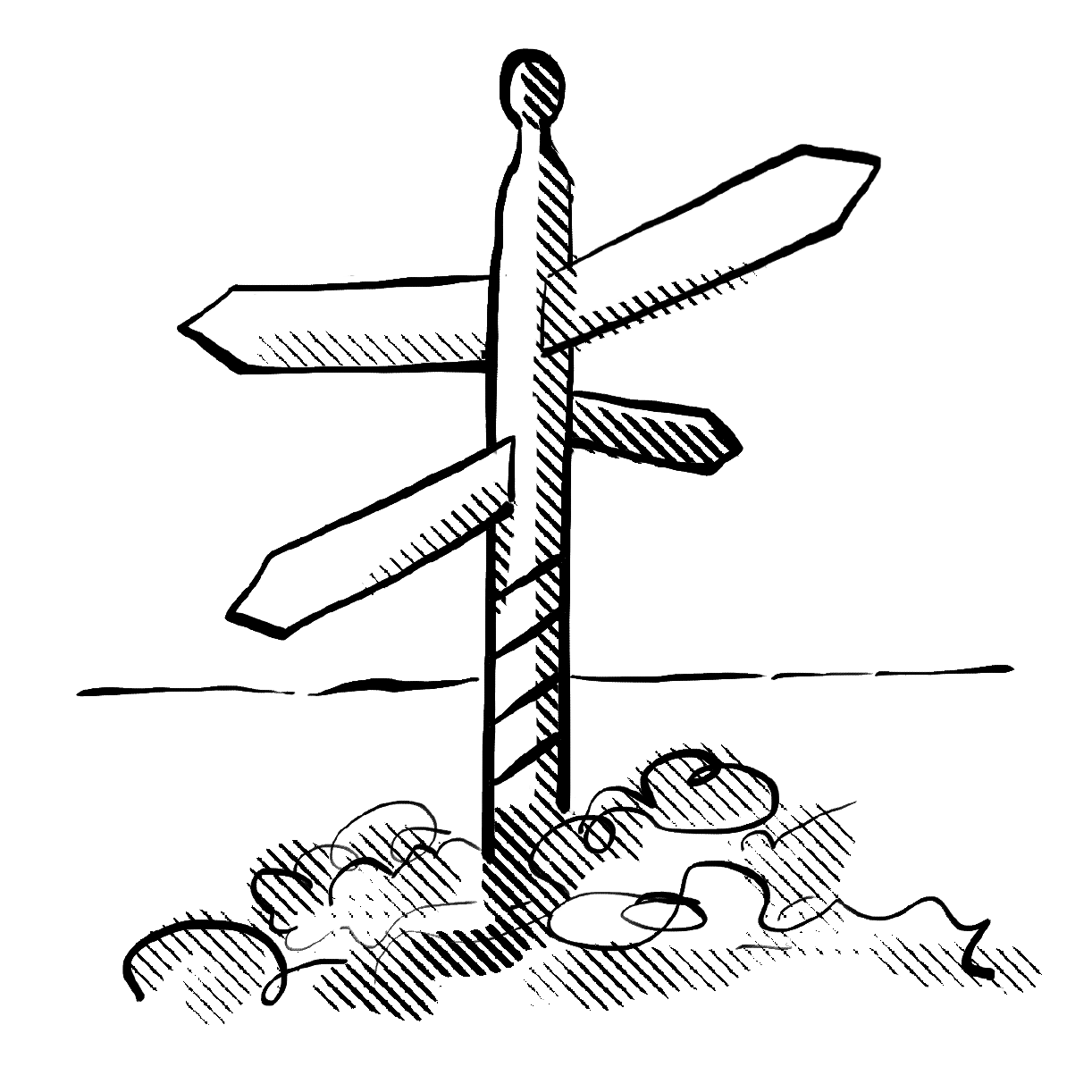
Learning across borders
The international collaboration within AAL was extremely helpful for the development, continues Johannes. And once again, it was crucial to carefully listen to users. ‘In Italy, people initially didn’t like Anne at all. They said: we have our family! Then a nurse in one of our sessions said: what if we prayed with Anne? That idea was well received and made people much more interested in Anne.’ So this is another lesson we learned: what works well in your own country might not work in other parts of Europe.
Will Anne manage to conquer a ‘complex market’?
Read more about the fourth stage of the journey >
The added value of international collaboration
Within AAL, Annemarie Johannes has set up a lot of international collaboration. Initially, cooperating with other countries was quite a challenge, she remembers. It makes you realise just how large the differences are, even in the ways we work. ‘In the early stages, the collaboration strongly focused on ICT development. In this phase, you’re mainly looking for smart programmers and it does not matter whether they are located in Australia or the Netherlands. However, our somewhat direct Dutch communication style can throw a spanner in the works. And then you realise that you need to take a step back now and then. But the biggest differences become apparent when you really start working with seniors. Then you need to be able to respond to specific wishes, such as praying with Anne.’
Lesson: make things fun and keep them fun
‘Always keep things fun. “Fun” not only works well for the seniors you’re developing a solution for – they’ll embrace it if it’s fun to use - but your team also remains enthusiastic if it is fun to contribute to the development.’
Annemarie Johannes, co-founder Anne4Care
Living labs
Een aanpak waarin innovatieve ideeën en concepten samen met gebruikers worden ontwikkeld en getest in levensechte situaties.
Proofs-of-concept
Methode om vast te stellen of een idee, technologie of functionaliteit haalbaar is en aansluit bij de belevingswereld van de beoogde gebruikers.
Fourth stage
Actual use in practice
One of the biggest challenges for care innovations is structural funding. Despite the enthusiasm of care organisations and clients, a solution will often fail to take off if there is no reimbursement of the costs. An innovation like Anne can clearly take over routine tasks. This allows professionals to spend more time on activities that create real added value. But for a reimbursement of the costs, you need proof of that. Johannes is proud of her social business case for the day care centre of IMEAN. ‘Ecorys demonstrated that, on average, Anne saved at least 1.5 hours of professional care per week. And even more important, it improved the user’s quality of life. People say they are pleased and proud that they can do things themselves again. And that they enjoy using the tool.’
Tip: design your solution in modules
‘Ensure that your solution has a modular structure. This allows you to select components and cast these in a different mould if the context requires that. An avatar like Anne can easily become a hostess on a cruise ship who welcomes guests at their cabin in their own language. Or you can turn it into a butler, and rename it James.’
Annemarie Johannes, co-founder Anne4Care
Co-design
Is an approach to design which actively involves all stakeholders in the design process to help ensure the result is usable and meets their needs.
Operating in a complex market
Anne navigates in a complex market, according to Johannes: ‘You pay for a cup of coffee on the terrace yourself. But due to the Dutch funding structures, in the care setting the user is usually not the one who pays +. It could be the informal carer – we are investigating if this is a feasible model – a municipality, a care organisation or a health insurer. If someone can live at home longer with Anne, organisations in another funding pillar of the healthcare system benefits from that. But those are not the parties that will pay for Anne. Nevertheless, Johannes succeeded in getting some municipalities to reimburse the costs from the Dutch Social Support Act budget. Unfortunately, each municipality applies its own rules. That means that if you are successful in one municipality, you are not automatically accepted in all the others. However, several health insurers now reimburse e-consultations. So, if a care provider prescribes Anne, then the tool can be reimbursed as ‘telecare’.

Lesson: satisfied users but no reimbursement
‘After a project in a care organisation, we had to take back all Annes. There was no structural funding in sight. One lady could not pay for the tool herself and that was very sad. Then she said, in the presence of the director: I want to say one more time that I really cannot miss Anne. She has become my friend. I have already introduced Anne to all my friends. The director’s response was: that’s unacceptable... You know what? We will buy it for you!’
Annemarie Johannes, co-founder Anne4Care
Anne kost € 45 per maand.
Towards a supersmart communication shell
Ultimately, the future lies in a sort of hybrid service, according to Johannes. Technology is helpful but it can never completely replace human care. Therefore, a technical solution alone will not work. Her goal is that Anne evolves into a supersmart communication shell, a link between human and machine that grows with you according to your needs. Johannes: ‘Imagine: First, I only need an agenda because I am forgetful. But in 10 years, I might need an alarm system. Or Anne should open my front door. The telemetry data from speech and interaction that our users generate can be used to measure whether somebody’s cognitive condition is deteriorating. We are investigating this with Radboud University in Nijmegen. Our users manage their own data – not located in the cloud, but on their device. If they wish, their data can be used to measure their condition and Anne can adapt accordingly. In this way, Anne enables people to live independently even longer.’
Dependent on the care provider
When it comes to technology for older people, the end user is usually not your actual paying customer. Decisions about purchasing or reimbursement are often taken by the care provider. Johannes: ‘Fortunately, a number of health insurers already offer structural funding possibilities for video care. Anne could fit well into this category. However, things are often more complicated at the level of municipalities. The care professional who visits a person every day has nothing to say about the allocation of technical support funded or provided by the municipality. She can only suggest: It would be good if this person is supported by Anne. But nothing can be arranged unless the social support consultant agrees.’
ZonMw Pearl for Anne
Annemarie Johannes was awarded a ZonMw Pearl + on 2 February 2022 for developing the avatar Anne. The jury was impressed by Anne’s versatility and diversity of functionalities. Thanks to the different functions and languages Anne speaks, it can be used by many different target groups and according to individual needs. Anne is also a good example of international collaboration. ZonMw is enthusiastic about the innovative methods that have been used to co-create with the target groups. For instance, the active contribution made by people with dementia in developing the virtual assistant. What Anne means to people is beautifully illustrated in the video below.
Lesson: developers aren’t marketeers
‘We’re a great group of developers, but now we have to launch a product on the market. So we hired somebody with this type of experience. And we’re looking for more people who can boost our sales. At the moment, we only see a trickle of customers via the website and through word-of-mouth recommendations. It’s just a handful of people that say: I want to purchase Anne for my mother. But this is not enough for us to survive as a company.’
Annemarie Johannes, co-founder Anne4Care
Co-design
Is an approach to design which actively involves all stakeholders in the design process to help ensure the result is usable and meets their needs.
TNO
TNO is the Dutch organisation for applied scientific research. Website: https://www.tno.nl/en
ZorgInc
ZorgInc is an accelerator for startups and scaleups in the digital health sector. It is their aim to support digital health startups in successfully up-scaling their activities.
Co-creation
A form of cooperation in which all participants exert an influence on the process and the outcome of this process.
Dutch financing system
In the Dutch health and care system there are 3 main reimbursement pillars.
1) Social Support Act
2) Health Insurance Act
3) Longterm care Act
In pillar 1 municipalities fund all kind of support to citizen that enable them to live indepently as long as possible.
In pillar 2 health insurance companies reimburse all medical related care.
In pillar 3 high level care for vulnerable elderly people or people with severe mental or physical disabilities gets reimbursed.
More info on the Dutch financing structure, read here
ZonMw Pearl
This is an award for ZonMw funded projects who stand out in terms of achieved project results.
x
